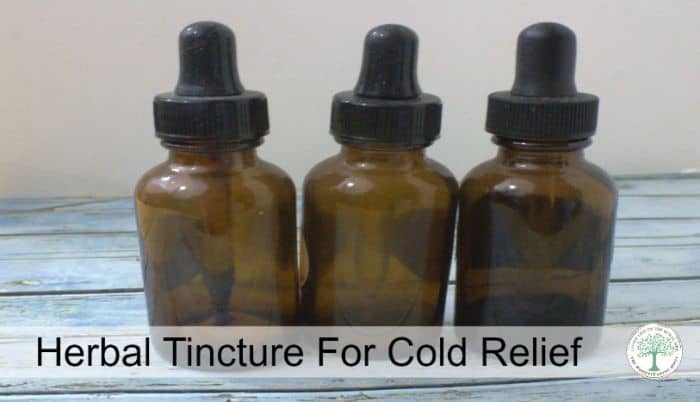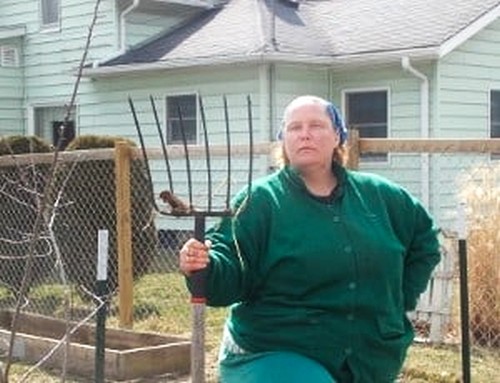A tincture is an herbal extract that uses an alcohol menstruum to extract the medicinal qualities.
To make a good quality tincture, the highest alcohol by volume (80%) is most often used. This may be brandy, vodka, or everclear. The cheapest, bottom shelf alcohol is fine for this.

The alcohol does the job of pulling out the herbal properties as well as acting as a preservative. Most herbal tinctures have an indefinite shelf life thanks to the alcohol.
Making a tincture is actually very easy. You will want to measure the herbs by weight when making them for medicinal purposes.
The reason for this is that some herbs, while useful, can be toxic in high concentrations. You will also want to get the right amount for the “job” you need it to do.
There is nothing worse than taking an herbal tincture to help with cold symptoms, only to find that you are not taking enough to do anything, right?
For colds, we use a a blend of herbs in a tincture at the start of symptoms. I like to have a good blend of herbs to assist my body in dealing with cold symptoms as well as supporting the immune system.
For this tincture, we use Echinacea (Echinacea angustifolia) for its immune stimulating properties, Astragalus (Astragalus membranaceus) for its antiviral and antibacterial properties, and Oregon Grape (Mahonia aquifolia) for its antimicrobial properties.
Do leave out the Oregon Grape if you are pregnant.
To make this tincture you’ll need:
- 10 grams dried echinacea
- 10 grams dried astragalus
- 5 grams dried oregano grape root
- 250 ml of alcohol
- Place the measured herbs in a mason jar and cover with the alcohol.
- Allow to steep for 4 weeks…
- … then strain.
- Store in a cool, dry place.
To use at the start of a cold, take 1 teaspoon 3 times daily for adults, and 1/4-1/2 teaspoon 2 times daily for children ages 2 and up.
What is your favorite way to combat cold symptoms? Have you made tinctures before? Be sure to pin this for later!

Heather’s homesteading journey started in 2006, with baby steps: first, she got a few raised beds, some chickens, and rabbits. Over the years, she amassed a wealth of homesteading knowledge, knowledge that you can find in the articles of this blog.
Learn more about Heather and the rest of the writers on this page.
